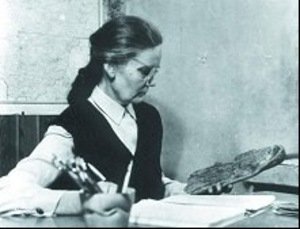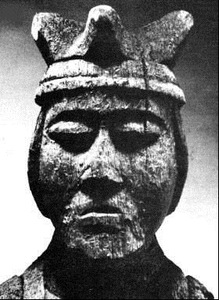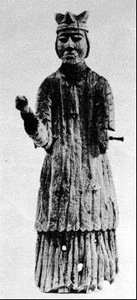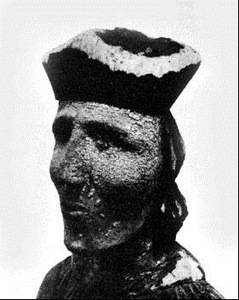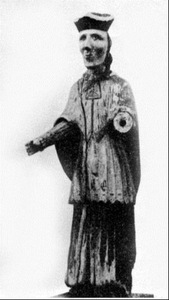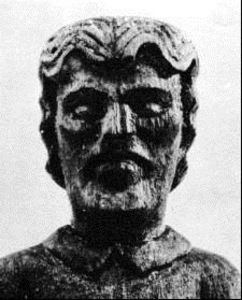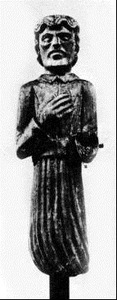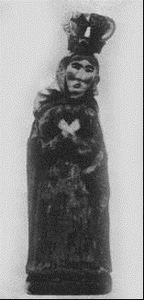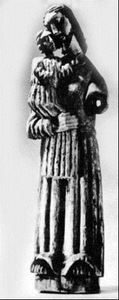THE HARD-WORKING MUSEUM BEE 0
To mark the centenary of Akvilė Mikėnaitė (1912-2001)
In brief: 10 April is the centenary anniversary of the art critic Akvilė Mikėnaitė – one of the most hard working Lithuanian museum specialists. She dedicated her whole life to the research of Lithuanian folk art, especially, wooden sacred sculpture. She leaded intensive expeditions in Lithuania for forty years; she collected, organised and researched the Lithuanian folk art heritage.
A. Mikėnaitė wrote: ‘The traditional Lithuanian folk sculpture is one of those areas of visual art that plays a significant role in Lithuanian folk art. It is characteristic of the richness and variety of forms, inner expressivity and spirituality. Folk sculpture was developed in the Lithuanian village and spread in forests, fields, roads, cemeteries and homesteads.’
Akvilė herself was born in a beautiful Lithuanian homestead, yet in Latvia, very close to the Northern Lithuania. She studied at Subatė Latvian Gymnasium together with her brothers Jonas and Juozas who later became famous artists – a ceramicist and a sculptor respectively. In 1932-9 Akvilė studied history at Vytautas Magnus University in Kaunas and graduated from Vilnius University in 1940. She started her work at the Lithuanian Art Museum in 1944 and worked there till the end of her life – 1 May, 2001. At the same time she taught at Vilnius University and Vilnius Art Academy.
As the patriarch of Lithuanian museology Paulius Galaunė responded to folk sculpture, ‘This phenomenon of our folk art is full of artistic elements. We find constructivism of shapes, brevity of carved forms, simplicity and ease of technique, great skills of using materials and tools, vividness and originality of both image and motif’ (Galaunė, ‘Lithuanian Folk Art’, 1930).
Akvilė Mikėnaite noticed many vivid elements of the peasant everyday in folk sculpture. Sometimes the saints are depicted with ethnographic clothes; this would make a huge impression on villagers. A saint with villager’s clothes became close, familiar, as if alive. The local character of Lithuanian folk sculpture is also reflected in the inner expression of sculptures. For instance, Virgin Mary is sometimes conveyed as a shy maiden or a firm, earthly woman.
The subject of the Pensive Christ was considered a figure of poverty and suffering by folk. Galaunė writes: ‘A contemplating Jesus sitting with his head supported by his hand was already known in the fifteenth-century Germany. It is called ‘Der Schmertzmann’ there and ‘Penseur’ in France (Bretagne). Poland also has her Pensive Christ, calling it Chrystus Frasoblivy, Bolejący, Chrystus Dumająncy‘. (Ibid)
In Akvilė Mikėnaitė‘s words, anonymous folk sculptors left a remarkable cultural heritage, which still glorifies a hard-working and talented Lithuanian nation striving for the good, beauty and truth.
Her dedication and enthusiasm, according to the art critic Žydrė Petrauskaitė, helped museums gather a large part of valuable collections of folk art. During her long career she visited many Lithuanian villages and towns together with museologists and students. Not only expanded and systematised she the heritage of folk art but also researched the collected material thoroughly and methodically. Every sculpture told her its own story, shared its warmth.
Akvilė Mikėnaitė always appreciated beauty, spirituality and simplicity; she was intolerant of philistinism and kitsch. Totally devoted to folk art and work at the museum, she tried to reveal the beauty and significance of the traditional folk art.








